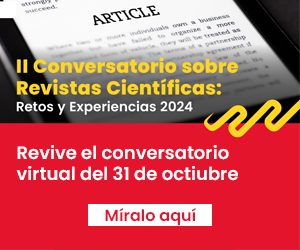Frequency and related factors of alexithymia in patients with fibromyalgia treated at a public hospital in Lima, Peru.
DOI:
https://doi.org/10.20453/rnp.v84i2.3997Keywords:
Alexithymia, fibromyalgia, depressionAbstract
Objective: To determine the frequency of alexithymia and associated factors in patients with fibromyalgia, and the relationship between alexithymia with functional capacity, pain intensity, depression and general variables (age, sex, time of illness, degree of instruction, and years of study) in fibromyalgia. Material and methods: Descriptive cross-sectional study of patients with fibromyalgia from the Rheumatology service of a public hospital in Lima, Perú. A sociodemographic record, TAS-20, MD-HAQ and CES-D were applied. Results. Of the 126 patients with fibromyalgia, 60 had alexithymia (47.62%); 24 alexithymic patients had depression (40 %), and 39 had functional disability (65 %). In the bivariate analysis, alexithymia was significantly related to greater comorbidity, less education, greater pain intensity, greater fatigue and more reported symptoms. In the multivariate analysis, years of study (£ 11 years) were the only factor related to alexithymia (TAS-20) (p=0.010, OR: 2.589 [1.249 – 5.365]). Conclusions: This study shows a considerable frequency of alexithymia in fibromyalgia patients and, in the multivariate analysis, the finding is significantly related to a lower number of years of study.
Downloads
References
Moyanoa S, Kilsteina J, Alegre C. Nuevos criterios diagnósticos de fibromialgia: ¿vinieron para quedarse? Reumatol Clin. 2015; 11(4):210-214.
Alvarado M, Oliva E. Conocimiento, actitudes y resiliencia respecto a su enfermedad en pacientes con fibromialgia de dos hospitales de Lambayeque. Tesis para optar el título de médico cirujano. Chiclayo: Universidad Católica Santo Toribio de Mogrovejo; 2017. 26 pp.
Ahmed S, Aggarwal A, Lawrence A. Validation of the proposed 2016 revision to 2010 ACR preliminary fibromyalgia diagnostic criteria in a tertiary care setting. Ann Rheum Dis. 2017; 76:388.
Alegre J. La Fibromialgia es una entidad primaria del dolor: ¿Hay deterioro cognitivo en la fibromialgia? Rev Soc Esp Dolor. 2008 ; 15(6): 355-357. (Citado el 5 de marzo del 2020) Disponible en: http://scielo. isciii.es/scielo.php?script=sci_arttext&pid=S1134- 80462008000600001&lng=es.
Carmona L, Ballina F, Gabriel R, Laffon A. The burden of musculoskeletal diseases in the general opulation of Spain: results from a nation – wide study. Ann Rheum Dis. 2001; 60:1040–1045.
Quevedo H. Incremento en la prevalencia de fibromialgia en un centro médico: un estudio observacional comparando los años 2009 y 2011. Interciencia. 2012; 3(4): 5-9.
Mur T, Llordés M, Custal M, López G, Martínez S. Perfil de pacientes con fibromialgia que acuden a los centros de atención primaria en Terrassa. Reumatol Clin. 2017; 13(5): 252–257.
Garaigordobil M, Govillard L. Síntomas psicopatológicos en personas con fibromialgia: una reflexión. Interdisciplinaria. 2016; 33(2): 355-374.
Galvez C, Reyes G, Duschek S. Cognitive Impairments in fibromyalgia Syndrome: Associations with positive and negative affect, alexithymia, pain, catastrophizing and self-steem. Frontiers in Psychology. 2018; 9:377.
Steinweg D, Dallas A, Rea W. Fibromyalgia: unspeakable suffering, a prevalence study of alexithymia. Psychosomatics. 2011; 52(3): 255-262.
Ricciardi L, Demartini B, Fotopoulou A, Edwards M. Alexithymia in Neurological Disease: A Review. J Neuropsychiatry Clin Neurosci. 2015; 27(3):179– 187.
Laire X, Rodriguez A, Rodriguez J. Descripcion dimensional de rasgos de personalidad en mujeres con diagnóstico médico de fibromialgia. Revista de Psicología GEPU. 2012; 3(2): 15-35.
Avila L, de Araujo G, Guimarães E, Gonçalves L, Paschoalin P, Aleixo F. Characterization of the pain, sleep and alexithymia patterns of patients with fibromyalgia treated in a Brazilian tertiary center. Rev Bras Reumatol. 2014; 54(5): 409-413.
Horta G, Peláez I, Queipo G, Montero U, Romero M. Alexithymia is associated with mood disorders, impairment in quality of life and disability in women with fibromyalgia. Clin Exp Rheumatol. 2020; 38 (Suppl 123): 17-24.
Garip Y, Öztaş D, Bozkurt Ö, Telci S. Alexithymia in Fibromyalgia Patients and Its Impact on the Quality of Life. J İstanbul Med. 2015; 16: 137-140.
Castelli L, Tesio V, Colonna F, Molinaro S, Leombruni P, Bruzzone M, et al. Alexithymia and psychological distress in fibromyalgia: prevalence and relation with quality of life. Clin Exp Rheumato. 2012; 30(74): 70- 77. 17. Martínez M, Sánchez A, Miró E, Lami J, Prados G, Morales A. Relationships between physical symptoms, emotional distress, and pain appraisal in fibromyalgia: The moderator effect of alexithymia. J Psycho. 2014; 149(2): 115-140.
Kendall R, Rodríguez E. Validación de la Escala de Alexitimia de Toronto (TAS-20) en una población de estudiantes universitarios. Tesis para optar el título de especialista en psiquiatría. Lima: Universidad Nacional Mayor de San Marcos; 2003.
Maldonado M. Validación del MD-HAQ (Multidimensional Health Assessment Questionnaire) en un grupo de pacientes con artritis reumatoide de Hospital Nacional del 2 de Mayo. Tesis para optar el título de especialista en reumatología. Lima: Universidad Nacional Mayor de San Marcos; 2005.
Ruiz-Grosso P, Loret de Mola C, Vega-Dienstmaier JM, Arevalo JM, Chavez K, Vilela A, et al. Validation of the Spanish Center for Epidemiological Studies Depression and Zung Self-Rating Depression Scales: a comparative validation study. PLoS One. 2012; 7: e45413.
Asociación Médica Mundial. Declaración de Helsinki de la AMM – principios éticos para las investigaciones médicas en seres humanos. Washington DC: Asociación médica mundial; 2018. (Citado el 5 de marzo del 2020) Disponible en: https://www.wma. net/es/policies-post/declaracion-de-helsinki-de- la-amm-principios-eticos-para-las-investigaciones- medicas-en-seres-humanos/
Elboğa G, Serdar M, Altındağ Ö, et al. Alexithymia and attention deficit and their relationship with disease severity in fibromyalgia syndrome. Turk J Phys Med Rehab. 2019; 66(2): 134-139.
Di Tella M, Ghiggia A, Tesio V, Romeo A, Colona F, Fusaro E, et al. Pain experience in Fibromyalgia Syndrome: The role of alexithymia and psychological distress. J Affect Disord. 2017; 208: 87–93.
Alzahrani H, Coumaravelou S, Mahmoud I, Beshawri J, Algethami M. Prevalence of alexithymia and associated factors among medical students at King Abdulaziz University: a cross-sectional study. Ann Saudi Med. 2020; 40(1):55–62.
Montoro I, Reyes G, Duschek S. Alexithymia in fibromyalgia syndrome. Personality and Individual Differences. 2016; 102: 170–179.
Ghiggia A, Romeo A, Tesio V, Tella M, Colonna F, Geminiani G, et al. Alexithymia and depression in patients with fibromyalgia: When the whole is greater than the sum of its parts. Psychiatry Res. 2017; 255:195–197.
Kauhanen J, Kaplan G, Julkunen J, Wilson T, Salonen J. Social factors in alexithymia. Compr Psychiatry. 1993; 34(5): 330-335.
Carril R, Sechrest L, Riedel R. Sociodemographic correlates of alexithymia. Compr Psychiatry. 1998; 39(6): 377-385.
Mattila A, Kronholm E, Jula A, Salminen J, Koivisto A, Mielonen R, et al. Alexithymia and somatization in general population. Psychosomatic Medicine. 2008; 70: 716–722.
Marchi L, Marzetti F, Orrù G, Lemmetti S, et al. Alexithymia and psychological distress in patients with fibromyalgia and rheumatic disease. Frontiers in Psychology. 2019; 10(1735).
Fudino Y, Salazar J, Wong L, Vega J, Berrocal A. Frecuencia de sintomatología ansiosa y sus factores relacionados en mujeres con artritis reumatoide en un hospital general de Lima. Rev Neuropsiquiatr. 2015; 78 (2): 80-85.
Nicol A, Sieberg C, Clauw D, Hassett A, Moser S, Brummett C. The association between a history of lifetime traumatic events and pain severity, physical function, and affective distress in patients with chronic pain. J pain. 2016; 17(12): 1334-1348.















 RNP is distributed under a
RNP is distributed under a 